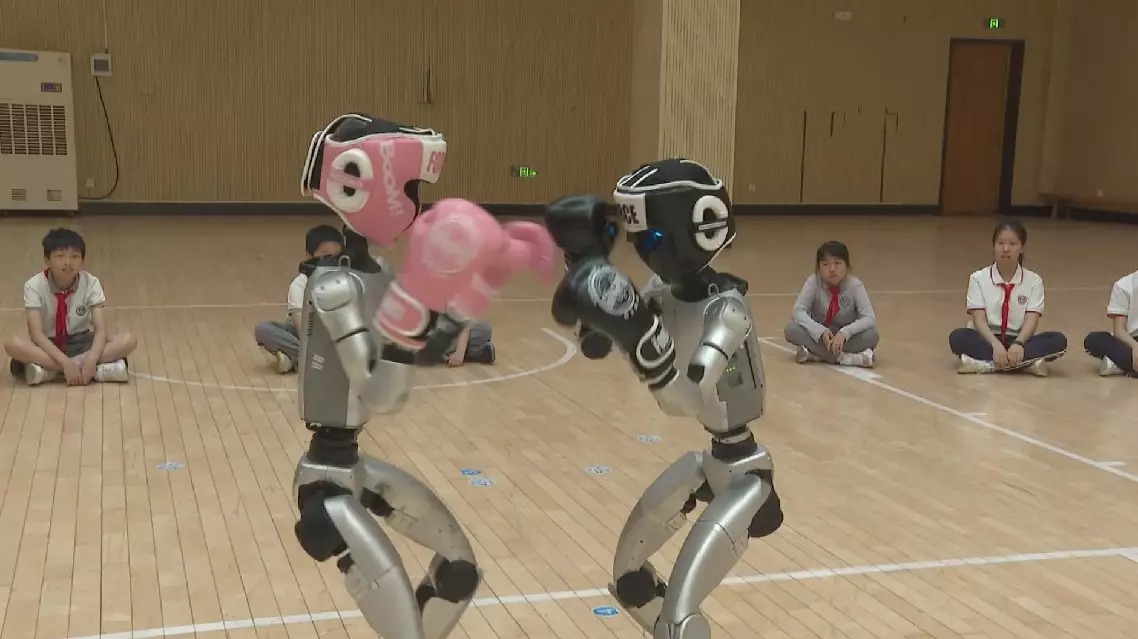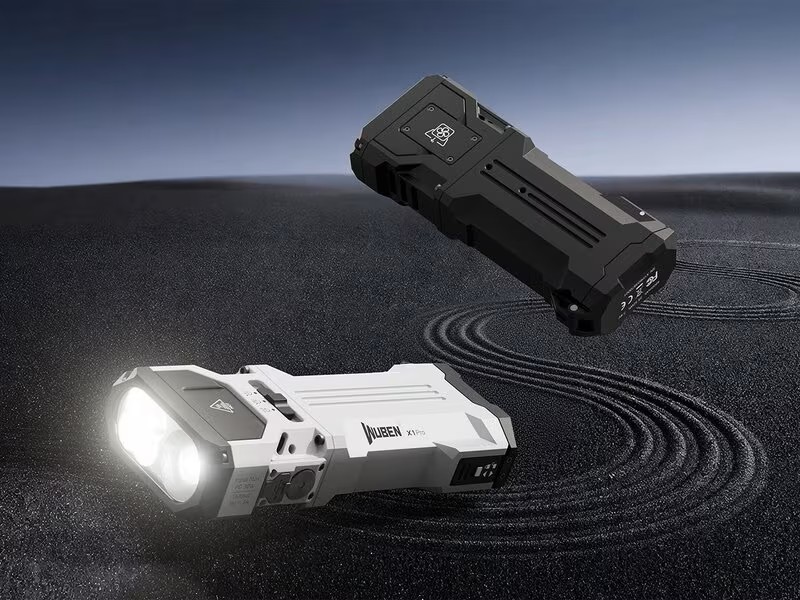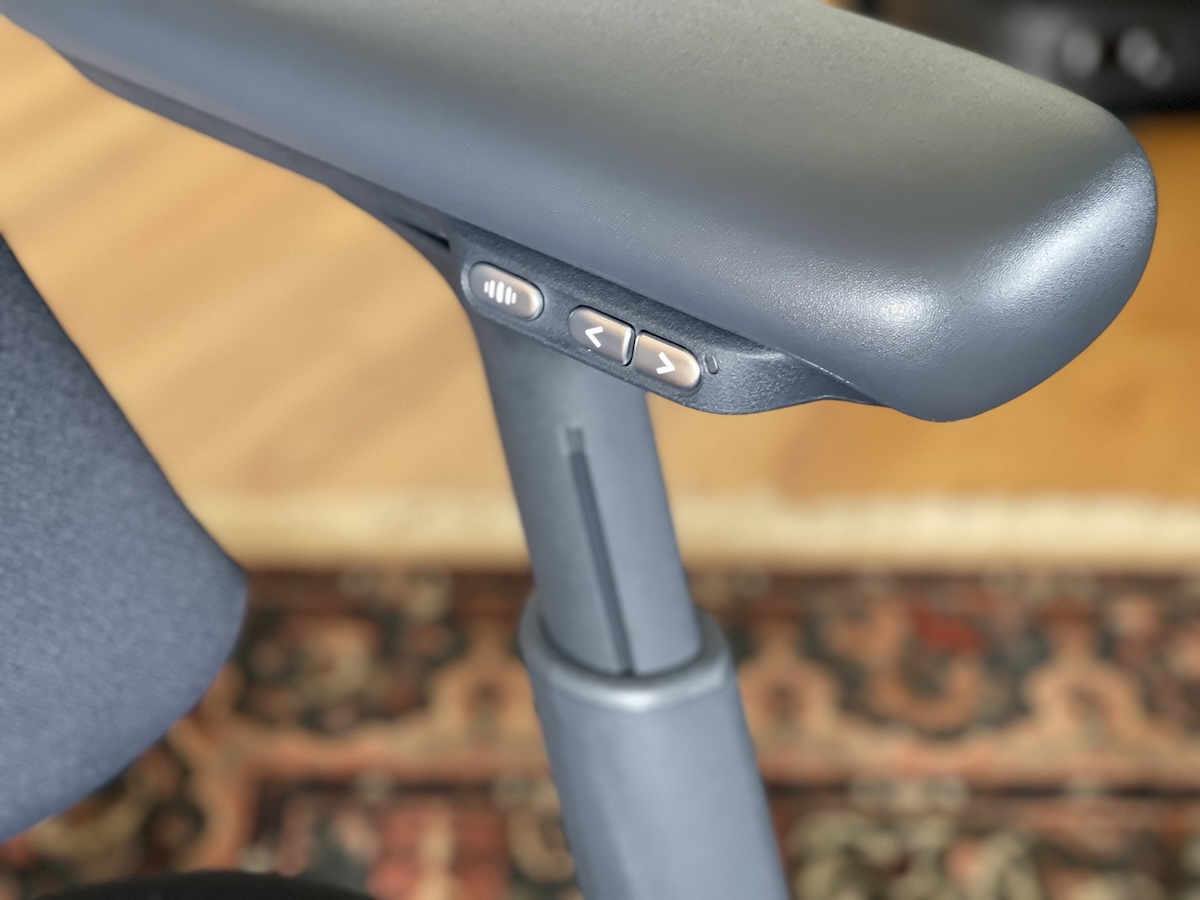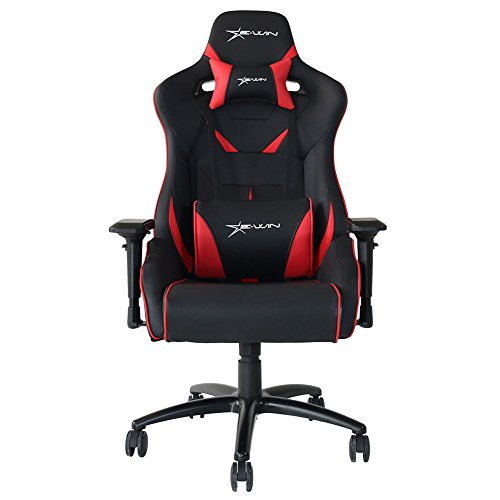Hangzhou-based Unitree Robotics brought its $16,000 G1 humanoids to a local school for combat demonstrations ahead of the world’s first robot boxing event. The company claims these 4.3-foot machines can perform boxing moves, though they move with all the grace of a Netflix buffering during the season finale. The robots target researchers and tech enthusiasts seeking affordable humanoid platforms that supposedly won’t judge your life choices. These quirky demonstrations highlight the G1’s evolution from tech novelty to a mass-produced humanoid platform poised for mainstream adoption.
Mechanical Boxers Show Their Moves
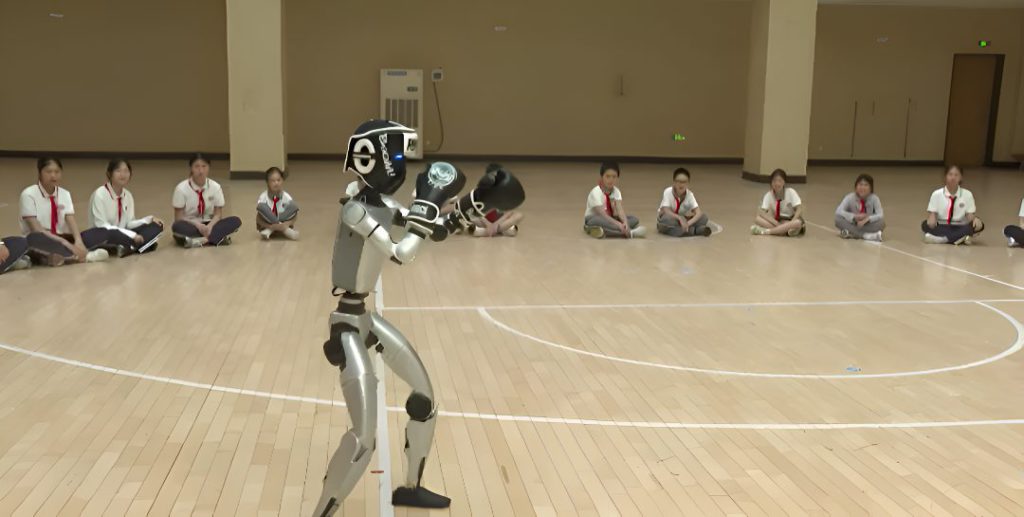
During Wednesday’s Hangzhou school demonstration, the robots demonstrated straight punches, hook punches, sidekicks, aerial spin kicks, and recovery from falls. Students watched the 77-pound machines execute choreographed combat sequences that looked more convincing than most TikTok dances. The display underscored how far AI-powered robotics has advanced, hinting at a future where synchronized humanoids move with military precision thanks to Figure’s breakthrough technology.
Performance appeared slower than human boxers, though previous humanoid robots struggled with basic stability during aggressive motions.
Student Audience Watches Robot Grappling
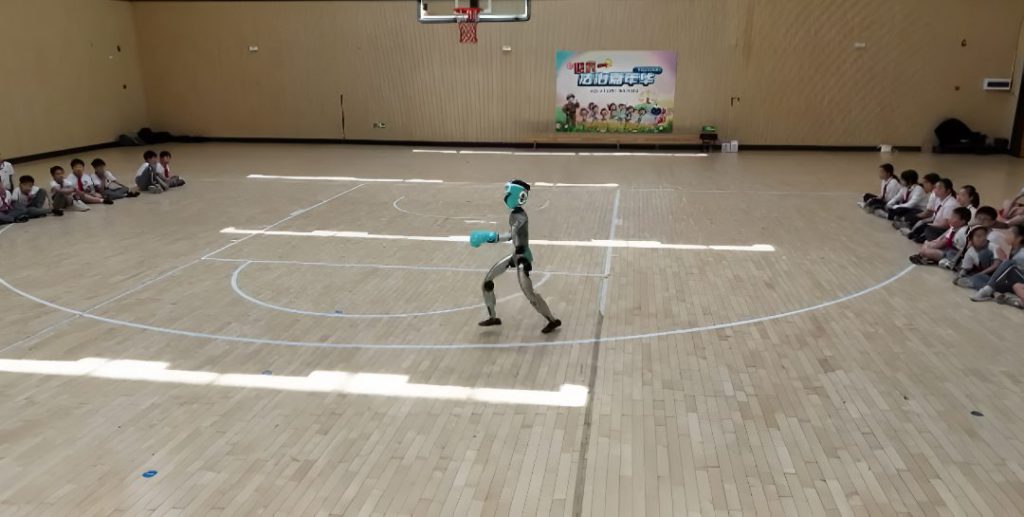
Two G1 units with different color schemes engaged in close-quarters sparring, showcasing grappling techniques. The machines traded positions and maintained contact throughout their session.
Marketing team member Chu Yang said in May 2025, “The robots fight in a human-machine collaborative way. We have three ways of controlling them” without revealing full details.
Solo Performance Tests Endurance
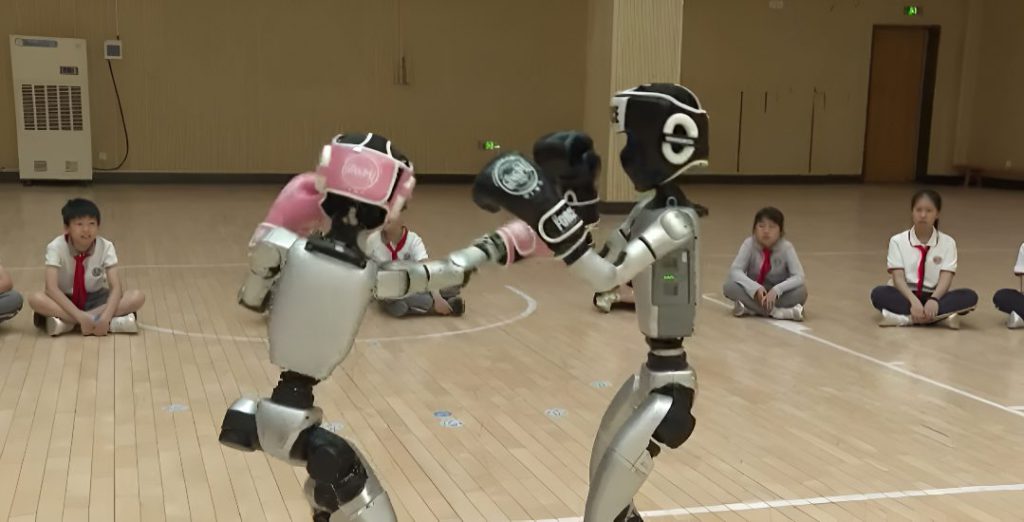
The humanoid robots completed a 40-minute jogging session at the school basketball court, drawing enthusiastic student cheers. The demonstration highlighted mechanical endurance capabilities.
The robot’s 9,000mAh battery provides approximately two hours of runtime according to specifications, though real-world combat performance remains independently unverified compared to Boston Dynamics‘ significantly pricier Atlas.
Intense Robot-on-Robot Combat
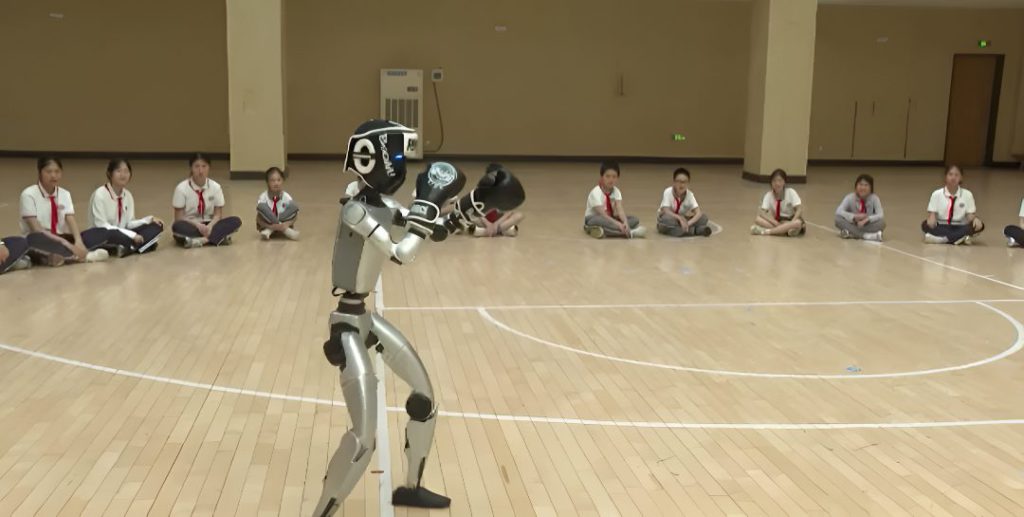
The concluding match featured robots executing choreographed combat sequences with increased aggression. Both machines engaged in sustained grappling while maintaining balance throughout extended contact periods.
Students observed the pink-headed and standard units trade dominant positions, suggesting motion control systems can handle complex multi-robot interactions beyond simple demonstrations.
Final Performance Assessment
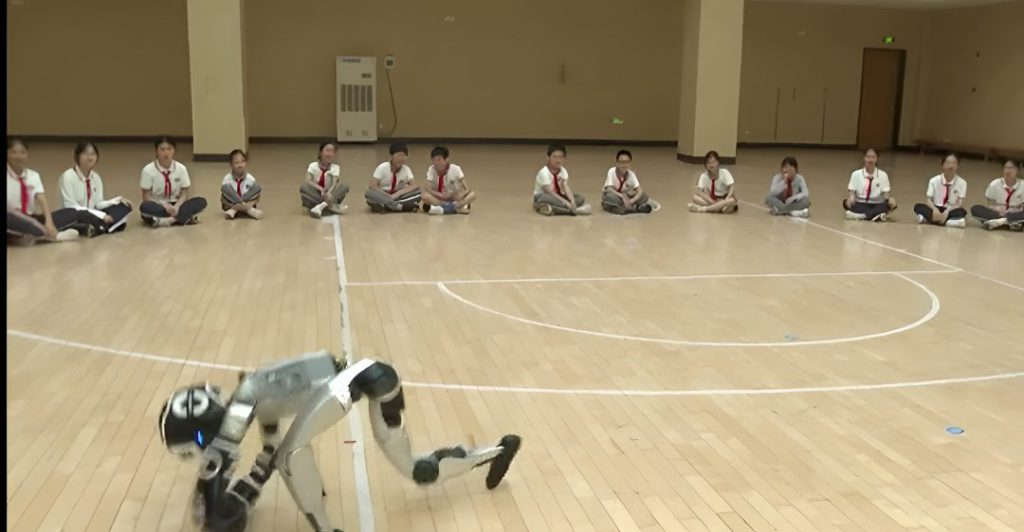
The teal-colored robot completed solo demonstrations across the basketball court, showcasing individual movement capabilities. Students watched the machine navigate the gymnasium space independently.
The world-first robot boxing event reportedly consists of performance and competitive matches scheduled for May 25 at Hangzhou Mech Combat Arena. Whether these demonstrations represent genuine competitive capability remains the million-dollar question.


